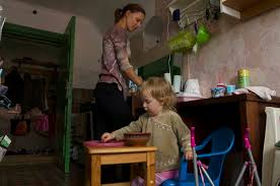Analytics, Economics, Financial Services, Latvia, Pensioners, Society
International Internet Magazine. Baltic States news & analytics
Thursday, 18.04.2024, 21:02
21.8% of Latvia's population at risk of poverty in 2015
 Print version
Print version |
|---|
The share of persons suffering from severe material
deprivation has declined sharply - from 16.4% in 2015 to 12.8% in 2016.
In 2015, as population disposable income increased, the
at-risk-of-poverty threshold rose as well - to EUR 318 euros monthly (EUR 291
in 2014). Out of the total population, 21.8% of the persons with monthly
equivalised disposable (net) income below EUR 318 euros were at risk of poverty
in 2015.
Compared to 2014, the share of persons at risk of poverty
declined by 0.7 ppt in 2015. The drop was facilitated by a 12.5% rise in the
minimum monthly wage (to EUR 360), higher employment, including among young
people and persons at pre-retirement and retirement age, as well as increase of
benefits related to family and children by approximately one third, whereas the
decline was hindered by comparatively slow growth of old-age pension size (on
average by 2.7% in 2015).
In 2015, the share of people aged 65 and over and subject to
risk of poverty increased by 3.5 ppt -
from 34.6% in 2014 to 38.1% in 2015. If a person aged over 65 is living alone,
the risk of poverty increases even more - from 67.4% in 2014 to 74% in 2015.
Over the year, the share of children at risk of poverty
diminished from 23.2% in 2014 to 18.6% in 2015 or by 4.6 ppt. The risk of
poverty in single parent families is still high, reaching 34.4% in 2015. In
families consisting of two adults and two or more children, the poverty risk
fell notably - by 9 ppt or from 34.5% in 2014 to 25.5% in 2015. Significantly
lower poverty risk may be observed in households consisting of two adults and
one child or those consisting of two adults and two children - 11.2% and 14.7%,
respectively.
At-risk-of-poverty rate in different socio-economic groups; 2004–2015 (%)

Every year, unemployed persons are the population group
subjected to high poverty risk (above 50%, except for 2009 with 47.9%); in 2015
the indicator reached 55.7%. The poverty risk among retired people has grown
sharply - to 41.9% in 2015, compared to 36.7% in 2014. In 2015, poverty risk of
employed persons reduced to 8.3% (9.2% in 2014).
The data source of the relative poverty and social exclusion
indicators is the European Union Statistics on Income and Living Conditions
(EU-SILC) survey 2016. The survey covered 6,000 households, and 11,600
respondents aged 16 and over were interviewed. The CSB will collect data on the
household income in 2016 during the period from February to June 2017.








 «The Baltic Course» Is Sold and Stays in Business!
«The Baltic Course» Is Sold and Stays in Business!

